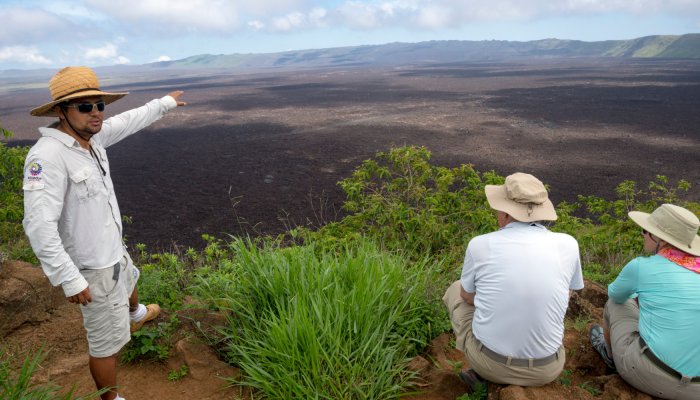What's High About Low Season in the Galapagos?
Every destination has a best time to visit—right? Wrong!
Wildlife never hibernates in the Galapagos Islands, so it’s always a good time to visit the Galapagos Islands. Whether you want to see animals hatching or nesting, migrating or mating, there’s always something happening in the Galapagos. Though there’s no real “off season” for the Galapagos wildlife, there are tourist “peak seasons.” But when the tourists are away, the wildlife come out and play.
But what’s so great about peak seasons, and are you missing out on everything your Galapagos vacation could offer by going during low season?
The peak season, generally running from mid-December to mid-January and mid-June to late August, gets a lot of love for its sunny days, warm water and light rainfall. The wildlife is also hopping during these months, but in the Galapagos, when isn’t it? The months of May and September as well as early December are generally considered low or shoulder season in the Galapagos Islands, but here’s why it may not matter.
Let’s give you the low down on the low season in the Galapagos:
While the wildlife is high, the tourist count is low. The Galapagos Islands are a lot less crowded during the shoulder season, so you can roam and sail throughout the islands in relative solitude. And the shoulder season is budget friendly, too: a “Low Season” tag also attracts cheaper flights, and there are often deals to be had.
- Air temperatures are in the high 70s to low 80s. The water is a balmy 76 degrees.
- The Galapagos rainy season is beginning to wane.
- Galapagos green sea turtles are hatching in Punta Cormorant on Floreana, Puerto Egas on Santiago, and in Gardner Bay on Española.
- Sea lions are mating and you can look for some new sea lion pups greeting the world.
- Marine iguana eggs begin hatching from nests on Santa Cruz Island.
- Waved albatross begin laying eggs on Española Island.
- Blue-footed boobies begin their mating dance on Seymour Island.
- Band-rumped storm petrels start their initial nesting period.
- Cooler in Galapagos still means air temperatures in the high 60s to low 70s with the water temperatures following suit.
- The garúa season attracts more marine mammals, fish, and birds despite the colder waters because the Humboldt Current brings up nutrient and plankton rich water.
- The drizzle largely effects the highlands while the lowlands continue to have an arid climate, and there’s plenty of wildlife to observe in both.
- Galapagos penguins are enjoying the feast swimming below the surface—and begin their courtship on Bartolomé Island.
- The sea is swarming with marine life, and migrating humpback whales and whale sharks can be seen passing by the coasts.
- It’s one of the best times to observe seabirds, who are particularly lively at their nesting sites.
- Sea lions are playful up on the rocky shores.
Touring in early December is a great early Christmas gift
December marks the beginning of the warm and rainy season, and the first warm days can be felt in early December. You can even look forward to some clear skies, though the occasional rain shower brings the flora into bud and gives the Galapagos Islands their first tinge of green. Early December embodies all the changes that make later December so special, but without the Christmas crowds.
- Cooler water means great temperatures for long snorkeling stints.
- Giant Galapagos tortoise eggs begin to hatch
- Galapagos green sea turtles can be seen mating.
- Waves albatross chicks begin to fledge.
- Marine and land iguanas begin mating.
- Blue footed boobies are nesting, as are red-footed and masked boobies, Magnificent and Great frigatebirds, Flightless cormorants, Galapagos penguins and Greater Flamingoes.
- Sea lions are breeding, so look forward to postural displays, barking and some fighting as the males compete for the cows.
Convinced that you might want to discover the islands without the crowds?
We’re celebrating the Highs of the Low Season and are offering Free Galapagos Round Trip Flights on our May 18th, September 14th, December 7th and 14th Galapagos Unbound Signature Trip. Join us and discover why adventure never hibernates in the Galapagos Islands.
For more year round information on traveling to the Islands, check out our Galapagos Weather - When To Go guide to help you plan the perfect Galapagos vacation.




